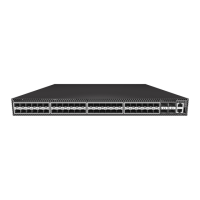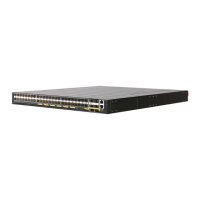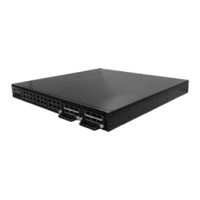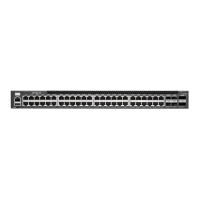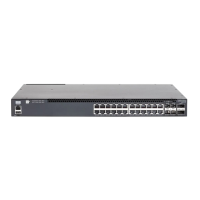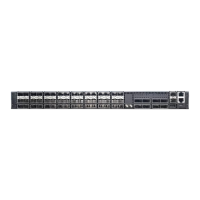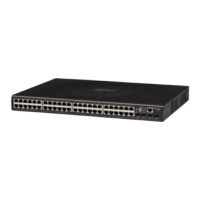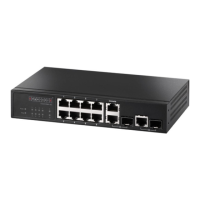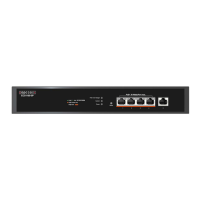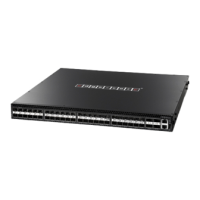Chapter 29
| IP Routing Commands
Open Shortest Path First (OSPFv2)
– 863 –
◆ When changing to a new key, the router will send multiple copies of all protocol
messages, one with the old key and another with the new key. Once all the
neighboring routers start sending protocol messages back to this router with
the new key, the router will stop using the old key. This rollover process gives
the network administrator time to update all the routers on the network
without affecting the network connectivity. Once all the network routers have
been updated with the new key, the old key should be removed for security
reasons.
Example
This example sets a message-digest key identifier and password.
Console(config)#interface vlan 1
Console(config-if)#ip ospf message-digest-key 1 md5 aiebel
Console(config-if)#
Related Commands
ip ospf authentication (857)
ip ospf priority This command sets the router priority used when determining the designated
router (DR) and backup designated router (BDR) for an area. Use the no form to
restore the default value.
Syntax
ip ospf [ip-address] priority priority
no ip ospf [ip-address] priority
ip-address - This parameter can be used to indicate a specific IP address
connected to the current interface. If not specified, the command applies
to all networks connected to the current interface.
priority - Sets the interface priority for this router. (Range: 0-255)
Command Mode
Interface Configuration (VLAN)
Default Setting
1
Command Usage
◆ A designated router (DR) and backup designated router (BDR) are elected for
each OSPF network segment based on Router Priority. The DR forms an active
adjacency to all other routers in the network segment to exchange routing
topology information. If for any reason the DR fails, the BDR takes over this role.
◆ Set the priority to zero to prevent a router from being elected as a DR or BDR. If
set to any value other than zero, the router with the highest priority will

